Taiwan Films
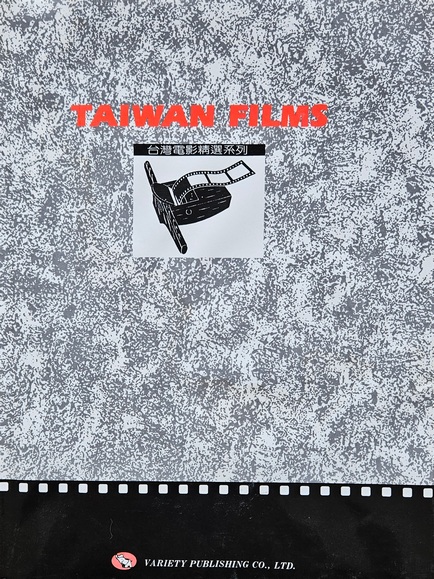
Contents
Taiwan films and social change
Taiwan films and literature
Hou Hsiao-hsien
Edward Yang
Wang Tong
New discoveries
Alice Ou (Editor)
additional info and links
Published January 1993 by
Variety Publishing
300 pages, numerous color illustrations, 260 x 200 mm (Hardback)
Edward Yang
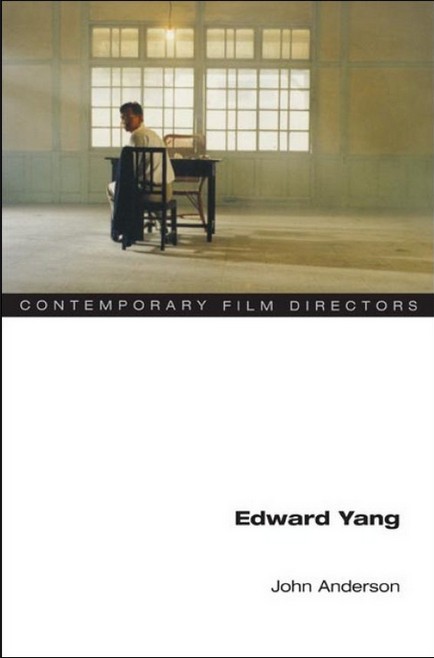
Textcredit: University of Illinois Press
Having largely given up on a career in film, Edward Yang had been working as a computer engineer for several years when he saw Herzog’s Aguirre, Wrath of God. Inspired to return to film, Yang, along with a handful of other filmmakers, including the great Hou Hsiao-hsien, went on to found the Taiwanese New Wave of the early 1980s.
read more….
Film critic John Anderson’s Edward Yang offers a comprehensive overview of the work of the writer-director—already considered one of the most important filmmakers of the past twenty years—from his breakthrough feature That Day, on the Beach to the epic Yi-Yi. Rooted in questions about what it means to be Taiwanese, Yang’s films reveal the complexity of life within the island’s patchwork culture. Anderson identifies the key narrative strategies, formal devices, moral vision, and sociopolitical concerns shot through Yang’s films. He explains what makes these films so distinctive by pinpointing the specific qualities of Yang’s style and outlook.
John Anderson
about the author and additional info and links
John Anderson is the chief film critic for Newsday. He also writes for the Los Angeles Times, L.A. Weekly, Film Comment, Billboard, Washington Post, The Nation, and other publications. He is the author of the book Sundancing: Hanging Out and Listening In at America’s Most Important Film Festival.
Published 2005 by
University of Illinois Press
144 pages, 15 black & white photographs, 210 x 140 mm
Ang Lee und seine Filme
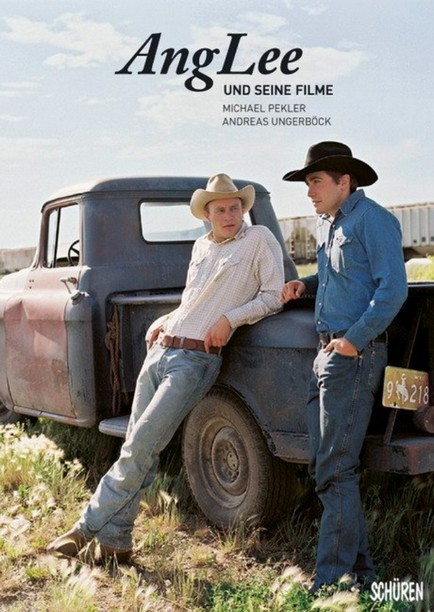
Textcredit: Schüren Verlag
Ang Lee (Der Eissturm, Tiger & Dragon, Brokeback Mountain, Gefahr und Begierde) zählt zu vielseitigsten Filmemachern der Gegenwart. Dieses Buch zeigt die Wurzeln seines Filmschaffens und analysiert seine Filme.
Ang Lees Filme, von der frühen „chinesischen” Trilogie Anfang der Neunziger Jahre bis hin zum mehrfach prämierten Gefahr und Begierde sind reiche, vielschichtige Erfahrungen für ein denkendes und fühlendes Publikum.
weiterlesen….
Sein kommerzieller Erfolg mit dem Martial-Arts-Epos Crouching Tiger, Hidden Dragon, sein Triumph mit dem überwältigenden Liebesfilm Brokeback Mountain, und seine zahlreichen Auszeichnungen bei Festivals und bei den Oscar-Verleihungen sind beredtes Zeugnis dieser Tatsache.
Ang Lee, geboren 1954 in Taiwan und seit langem in den USA zu Hause, dreht auf den ersten Blick höchst unterschiedliche Filme: Melodramen und Western, Familienstudien und Adaptionen klassischer Romane. Und doch sind es allgemeingültige Geschichten, Erzählungen über Männer und Frauen, über Liebende und Verzweifelnde, historisch und geografisch verankert im Osten und im Westen. So sind alle Filme Ang Lees, wie bei jedem Autorenfilmer von Rang, immer der eine Film in vielfältiger Ausprägung. Das Buch erklärt Ang Lees filmisches Werk anhand relevanter thematischer und ästhetischer Kriterien. Entlang dieser Fragestellungen diskutieren die Autoren das Aufeinanderprallen von Tradition und Moderne, die Fragilität menschlicher Existenz in Zeiten des Umbruchs, die Frage nach individueller Schuld, das strenge Ethos in der chinesischen Kampfkunst, die Faszination genuin amerikanischer Mythen und die beiden Eckpfeiler von Lees filmischem Universum: Liebe und Freiheit. Ein ausführliches Werkstattgespräch mit dem Regisseur und eine umfassende Filmografie ergänzen das Buch.
Michael Pekler und Andreas Ungerböck
mehr zu den Autoren und weiterführende Links
Michael Pekler – Eintrag auf Wikipedia
Andreas Ungerböck
Geboren 1960. Studium der Theaterwissenschaft und der Publizistik in Wien, 1988 Dissertation über Rainer Werner Fassbinder. Zahlreiche Buchveröffentlichungen, zuletzt: Spike Lee (2006, mit Gunnar Landsgesell; Bertz+Fischer), Revanche – Ein Film von Götz Spielmann (2009, substance media), Ang Lee und seine Filme (2009, mit Michael Pekler; Schüren), Peter Patzak (2009, mit Karin Moser; Filmarchiv Austria). Langjähriger Katalog-redakteur der Viennale sowie langjähriger Ko-Herausgeber des Filmmagazins ray und des Style-Magazins FAQ.
Erschienen September 2009 im
Schueren Verlag
192 Seiten, 100 Abb., 170 x 240 mm, Paperback
Subversive Realitäten
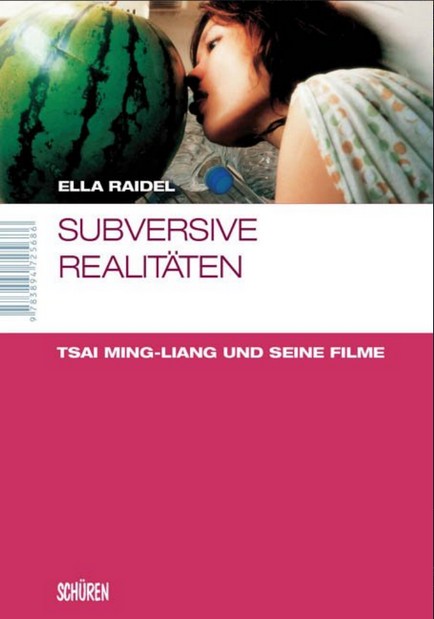
Tsai Ming-Liang und seine Filme.
Tsai Ming-Liang (geb. 1957) stammt aus Malaysia und lebt in Taiwan als Filmproduzent, Drehbuchautor, Theater- und Filmregisseur. Er gewann 1994 den Goldenen Löwen in Venedig und 1997 den Silbernen Bären in Berlin.
Die Arbeit untersucht Tsai Ming-Liangs Werk unter seinen sozialen und politischen Bedingungen und bezieht sich dabei stets auf seine persönlichen Erfahrungen und Beobachtungen der sozialen Realität Taiwans.
weiterlesen….
Tsai Ming-Liang stilisiert die Realität zu einer filmischen Wirklichkeit. Sprachlosigkeit und Entfremdung gelten in Tsais Filmen als Symptom eines Verlusts von kultureller Identität und sozialer Integrität und können vor dem Hintergrund Taiwans politischer Situation betrachtet werden: Ein demokratischer Staat ohne nationale Identität, der durch die territorialen Ansprüche der Volkrepublik China international isoliert ist. Seine Protagonisten stammen aus den Randzonen der Gesellschaft, sie sind mit ihren Körpern in Räumen gefangen, wie das Land im globalen Kontext.
Die Arbeit ist die erste umfassende, deutschsprachige Werkanalyse des malaysischen Filmregisseurs.
Ella Raidel
mehr zur Autorin und weiterführende Links
Ella Raidel ist Künstlerin und Filmemacherin, präsentierte ihre Arbeiten auf internationalen Video- und Filmfestivals sowie in Ausstellungen und Biennalen, wie z.B. Taipei Biennal (2016), 1st Asian Biennal Guangdong Museum of Art (2015), Bi-City Architecture Biennal Hong Kong (2015), Transmediale 2013 (Haus der Kulturen der Welt, Berlin), Floating Islands (Shanghai Biennale 2012/13 Kinmen/Taiwan), Asian Triennale Manchester, Discovering the Other (National Palace Museum Taipei), Based Upon: True Stories (Witte de Wit Rotterdam). Ihr Film Double Happiness (2014) lief auf über 50 internationalen Filmfestivals.
Erschienen August 2010 im
Schüren Verlag
Artikel auf TaiwanInVienna
Hou Hsiao-hsien
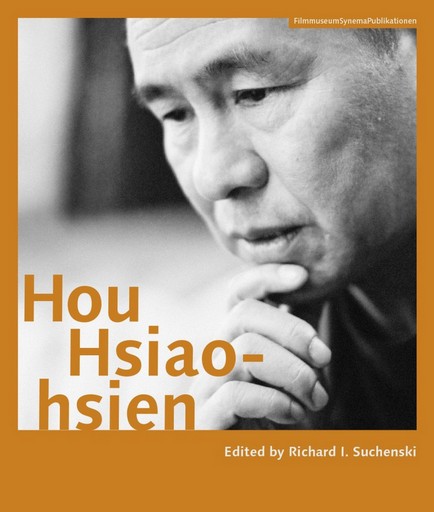
Textcredit: Austrian Film Museum
For younger critics and audiences, Taiwanese cinema enjoys a special status, comparable with that of Italian Neorealism and the French New Wave for earlier generations, a cinema that was and is in the midst of introducing an innovative sensibility and a fresh perspective. Hou Hsiao-hsien is the most important Taiwanese filmmaker working today, and his sensuous, richly nuanced films reflect everything that is vigorous and genuine in contemporary film culture.
read more….
By combining multiple forms of tradition with a uniquely cinematic approach to space and time, Hou has created a body of work that, through its stylistic originality and historical gravity, opens up new possibilities for the medium.
The volume includes contributions by Olivier Assayas, Peggy Chiao, Chung Mong-hong, Jean-Michel Frodon, Hasumi Shigehiko, Ichiyama Shōzō, Jia Zhang-ke, Kent Jones, Koreeda Hirokazu, Jean Ma, Ni Zhen, Abé Mark Nornes, James Quandt, Richard I. Suchenski, James Udden, and Wen Tien-hsiang, as well as conversations with Hou Hsiao-hsien and some of his most important collaborators over the decades.
Richard I. Suchenski (Editor)
about the editor and additional info and links
The editor, Richard I. Suchenski, is Founder and Director of the Center for Moving Image Arts (CMIA) and Assistant Professor of Film and Electronic Arts at Bard College. His academic work focuses on the development of cinematic modernism internationally and on the relationship between film and the other arts.
Published 2014 by
Austrian Film Museum
272 pages, numerous color illustrations, 200 x 170 mm
Tsai Ming-Liang and a Cinema of Slowness

Textcredit: University of Hawai’i Press
How can we qualify slowness in cinema? What is the relationship between a cinema of slowness and a wider socio-cultural “slow movement”? A body of films that shares a propensity toward slowness has emerged in many parts of the world over the past two decades. This is the first book to examine the concept of cinematic slowness and address this fascinating phenomenon in contemporary film culture.
read more….
Providing a critical investigation into questions of temporality, materiality, and aesthetics, and examining concepts of authorship, cinephilia, and nostalgia, Song Hwee Lim offers insight into cinematic slowness through the films of the Malaysian-born, Taiwan-based director Tsai Ming-liang. Through detailed analysis of aspects of stillness and silence in cinema, Lim delineates the strategies by which slowness in film can be constructed. By drawing on writings on cinephilia and the films of directors such as Abbas Kiarostami, Hou Hsiao-hsien, and Nuri Bilge Ceylan, he makes a passionate case for a slow cinema that calls for renewed attention to the image and to the experience of time in film.
Tsai Ming-liang and a Cinema of Slowness will speak to readers with an interest in art cinema, queer studies, East Asian culture, and the question of time. In an age of unrelenting acceleration of pace both in film and in life, this book invites us to pause and listen, to linger and look, and, above all, to take things slowly.
Song Hwee Lim
about the author and additional info and links
Song Hwee Lim is associate professor in the Department of Cultural and Religious Studies, The Chinese University of Hong Kong.
Published January 2014 by
University of Hawai’i Press
240 pages, 29 black and white illustrations, 234 x 160 mm,
(Hardback)
New Taiwanese Cinema in focus
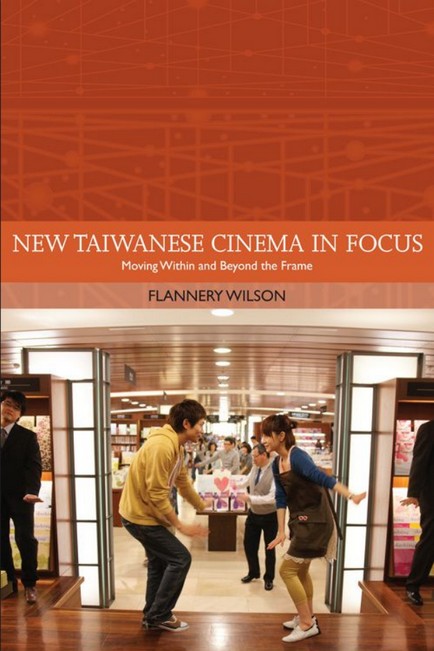
Moving Within and Beyond the Frame.
Places Taiwanese cinema from the 1980s onwards in both national and transnational contexts
In the Taiwanese film industry, the dichotomy between ‘art-house’ and commercially viable films is heavily emphasized. However, since the democratization of the political landscape in Taiwan, Taiwanese cinema has become internationally fluid. As the case studies in this book demonstrate, filmmakers such as Hou Hsiao-hsien, Edward Yang, Tsai Ming-liang, and Ang Lee each engage with international audience expectations.
read more….
New Taiwanese Cinema in Focus therefore presents the Taiwanese New Wave and Second Wave movements with an emphasis on intertextuality, citation and trans-cultural dialogue.
Wilson argues that the cinema of Taiwan since the 1980s should be read emblematically; that is, as a representation of the greater paradox that exists in national and transnational cinema studies. She argues that these unlikely relationships create the need for a new way of thinking about ‘transnationalism’ altogether, making this an essential read for advanced students and scholars in both Film Studies and Asian Studies.
Flannery Wilson
about the author and additional info and links
Flannery Wilson received her PhD in Comparative Literature from the University of California, Riverside in June 2011. She teaches French, Italian and film studies. Currently, she is teaching French at the University of Wisconsin, Stevens Point. Her research sheds light on the cross-cultural interactions between French and Italian and Chinese cinema(s). Her articles have appeared in Modern Chinese Literature and Culture, Senses of Cinema, and the Journal of Japanese and Korean Cinema.
Published 2014 by
Edinburgh University Press
200 pages, 11 black and white illustrations, 234 x 156 mm,
Published May 2015 (Paperback)
Published March 2014 (Hardback)
